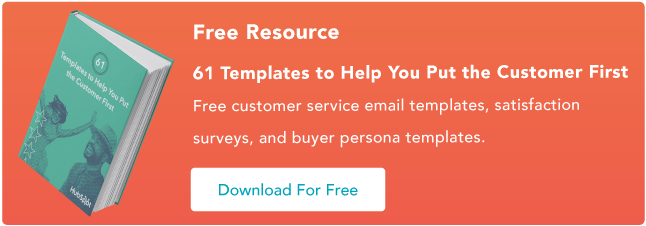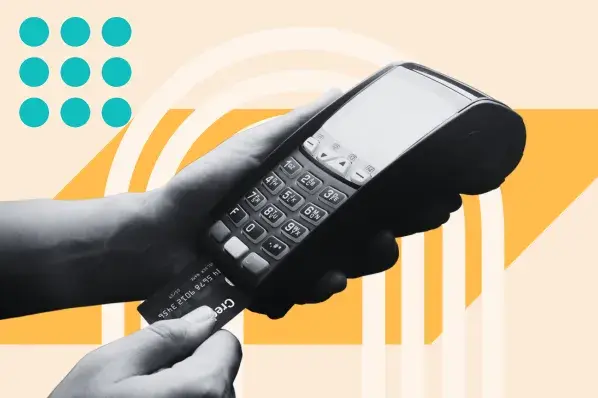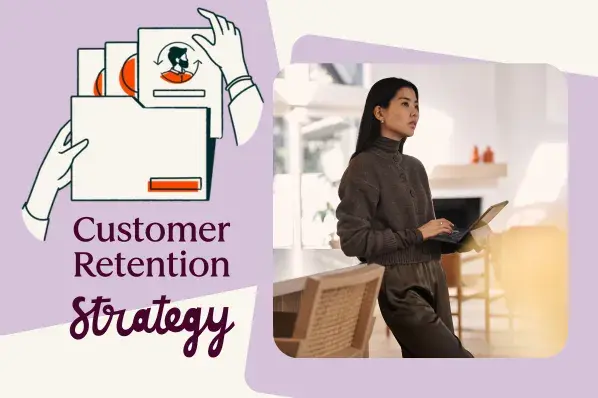What Is a High-Value Customer?
A high-value customer is a client or account that makes a significant impact on a company's bottom line. These buyers are incredibly important in customer service because they purchase from the business the most and can influence how other people perceive the brand.
We should note that high-value customers aren't always the ones who spend the most at your company. A good example is a superfan from an NFL team, like John Big Dog Thompson.

Thompson isn't just a season-ticket holder for the Cleveland Browns. He's been one of the team's biggest cheerleaders since the 1980s and served as a lobbyist for the team's return to Cleveland in 1995. What's more, Thompson even legally changed his middle name to his moniker, “Big Dog,” out of his enthusiasm for the Browns.
Thompson is worth much more to the Cleveland Browns than just the money he spends on tickets. He improves the fan experience around him, encourages others to attend games, and advocates for the brand in his personal time. That type of loyalty is incredibly hard to foster and if the Browns were to lose Thompson as a customer, they would lose much more than just a season-ticket holder. Fans who sat around him would miss his antics, his friends probably wouldn't go to as many games, and the Browns would have one less advocate generating free publicity for the team.
This is just one example of a high-value customer, but your company may also have to manage social-media influencers, big-name brands, and other types of buyers that can significantly impact your company's bottom line. If you want to create an effective strategy for engaging these individuals, read on to the next section for some tips that can help you help identify high-value customers at your business.
How to Identify a High-Value Customer
1. Compare key performance indicators (KPIs).
One of the most objective ways to identify high-value customers is to segment your customer base and compare customer lifetime value — as well as other relevant KPIs.

In this example, this retail company segmented its customer base by the products its customers purchased. The green boxes represent values that are above the company average and the red boxes indicate values that are below it. Using this chart, this company knows which customers have the highest lifetime value and which products they purchased the most.
While CLV is one way to compare customer value, there are plenty of other KPIs you can use to segment your customer base. For instance, you could use average recurring revenue (ARR) or purchase frequency to see how often customers are buying from you and how much they're spending on each purchase. Whichever metric you choose, KPIs provide an unbiased way for you to compare customer value and identify buyers who spend the most at your company.
2. Analyze your customer loyalty program.
Another good place to start is with your customer loyalty program. These individuals have already expressed their interest in your brand and are likely spending more at your company than other customers. For example, one report found that customers who are a part of a loyalty program spend 5 - 10% more than those who aren't.
The other benefit is that these customers are more likely to advocate on behalf of your business. After all, if they're taking the time to enroll in your loyalty program and work towards its rewards, then they're probably telling their friends about their benefits, too. Some loyalty programs even offer discounts to users who share the company's product with a friend — like the example below.

If your company does this, you should look at the customers who are sharing your loyalty program the most. These people are extremely valuable to your company because they generate word-of-mouth marketing and potential leads for your business.
3. Create a customer journey map.
One of the most common misconceptions about customer journey maps is that businesses think they only need to create one map for all of their customers' journeys. In reality, one customer's experience with your company can be drastically different than another customer's.
Here's an example. One customer discovers your business online and buys your product through your website. This customer loves how user-friendly your website is and is impressed by how fast you delivered their order. They quickly become a repeat customer because of the convenience that your brand offers.
The next customer finds out about your company through a friend, who purchased your product and immediately fell in love with it. This customer goes to one of your brick-and-mortar stores and demos your product with the help of a sales rep. They appreciate how durable your product is and how easy it is to use. They also become a repeat customer because of the reliability of your product and the competency of your sales team.
Both customers are high-value, but each one had a very different journey with your business. If you only have one journey map to represent all of your customers, then you might overlook some high-value ones and improperly categorize them. The more you can track these experiences and map them for your team, the easier it will be to identify your most valuable customers.
4. Review website and social media engagement metrics.
As mentioned earlier, sometimes it's not about how much a customer is spending on your products, but who they're sharing their experiences with. Social media and third-party review sites are incredibly powerful channels for word-of-mouth marketing, and all it takes is one post to go viral to generate some serious attention for your brand.
One of the most relevant examples we can look at today is the partnership between social media influencer, Charli D'melio, and Dunkin'.
Recognizing D'melio's impressive 106 million followers on Tik Tok, the coffee brand, Dunkin', offered her a partnership to promote its products — which she does using videos like the one below.
Even if D'melio doesn't spend a cent on Dunkin's coffee, she's still one of the brand's highest-value customers. Why? Because she generates tons of revenue for the business just by posting videos online. Even though Dunkin' is likely paying her to do so, this is a much more effective way of attracting customers compared to traditional advertising methods.
5. Survey your customers.
If you don't track KPIs like CLV or ARR, you can always survey your customers to learn more about their purchasing habits. While the downside of this is that it's up to the customer to supply information, the benefit is that you can ask direct questions and find out specific information about how people feel about your brand.
One survey that you can use is Net Promoter Score, or NPS ®, which asks customers how likely they are to recommend your company to a friend. This survey asks participants to rank their likelihood to refer on a scale of 1-10 and it provides them with a comment box where they can justify their answer or provide additional context. With this survey, you can quickly identify who's most likely to recommend your brand and who's most likely to churn after interacting with your company.
Retaining High-Value Customers
Identifying high-value customers is only the first step. Once you know who is making the biggest impact on your company's bottom line, your next task is to maximize their value and develop long-lasting, mutually-beneficial relationships with them. Not only do you want your company to feel secure in your partnership with these customers, but you also want your customers to be so delighted with their experience that they're compelled to tell other people about your company.
For more ways to keep high-value customers happy, read about customer retention and loyalty.
Net Promoter, Net Promoter System, Net Promoter Score, NPS and the NPS-related emoticons are registered trademarks of Bain & Company, Inc., Fred Reichheld and Satmetrix Systems, Inc.
.png?width=112&height=112&name=Image%20Hackathon%20%E2%80%93%20Vertical%20(30).png)



-2.png)
![7 Customer Acquisition Challenges You Might Face This Year [New Data]](https://53.fs1.hubspotusercontent-na1.net/hubfs/53/customer%20acquisition%20%20(1).webp)





![7 Secrets for Getting Repeat Customers That Stick Around [Consumer Data]](https://53.fs1.hubspotusercontent-na1.net/hubfs/53/repeat-customers.jpg)
